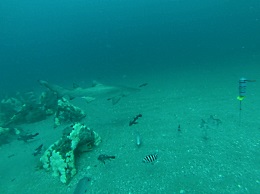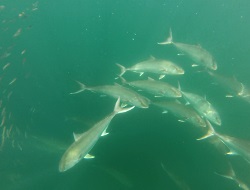Future Focus

In the spirit of the phrase, "if you build it, they will come", nearly 800 individual transmitters were detected by just a handful of acoustic receiver arrays in less than three years, despite large spatial gaps in monitoring coverage and placement of receivers in predominantly flat, sandy seafloor. As such, we hope that the initial successes of this study serves as a catalyst for enhanced future acoustic telemetry monitoring in SC and GA as well as elsewhere in the SE USA, consistent with the recommendations of Block et al. (2016) to establish a national (U.S.) animal telemetry work.

Future arrays would benefit from diversification of habitat types monitored, with emphasis on greater monitoring of areas with natural and manmade substrates that support benthic reef communities. Although many species were detected across a range of distances from shore, the greatest frequency of detection across taxa occurred between four and eight miles from shore, suggesting that future arrays should expand latitudinal vs. longitudinal coverage, perhaps also in conjunction with artificial reef networks in both states.

As evidenced by detection of sharks and cobia upwards to 23 miles from shore, expanded longitudinal coverage should improve understanding of seasonal distribution patterns for highly migratory, pelagic species. Expanded longitudinal acoustic array data are conducive to evaluating potential impacts of wind and wave energy technology on the middle to outer continental shelf. Similarly, near-shore receiver arrays can evaluate the impacts of dredging to mine sand for re-nourishing beaches and for maintaining shipping channel attributes.
